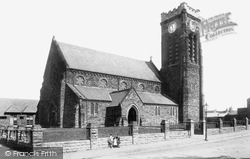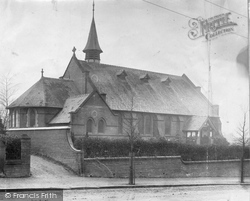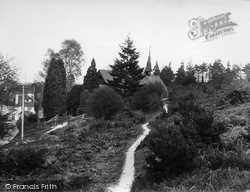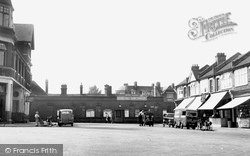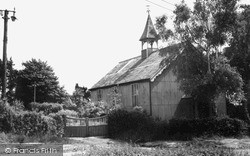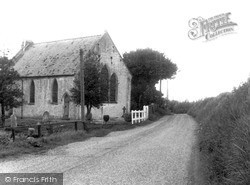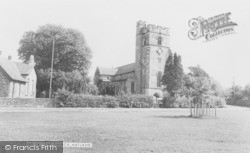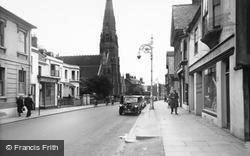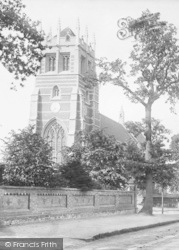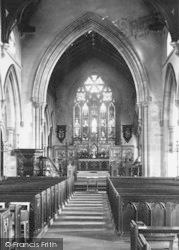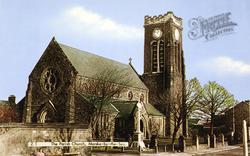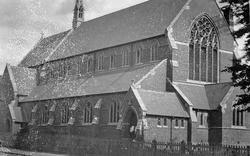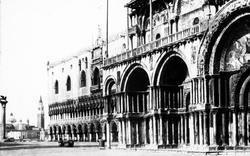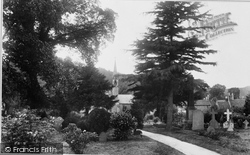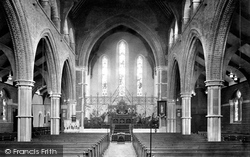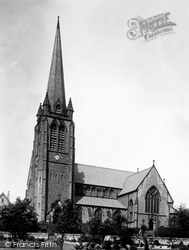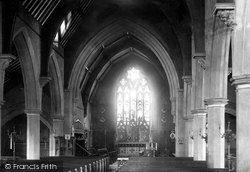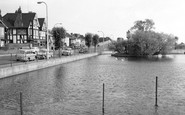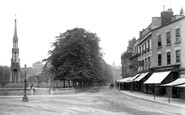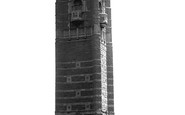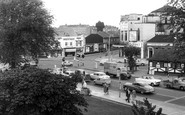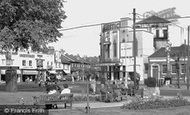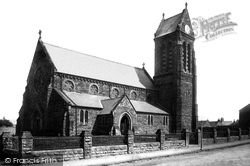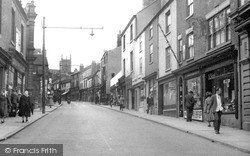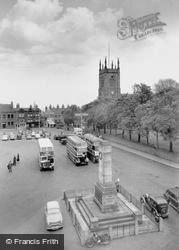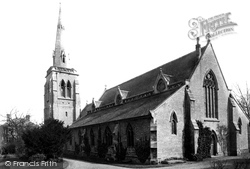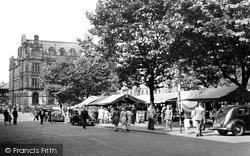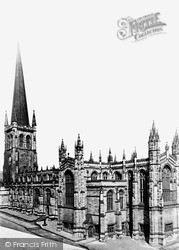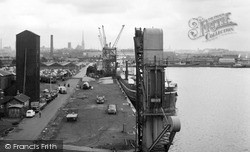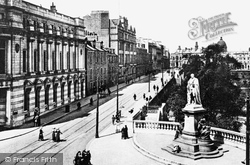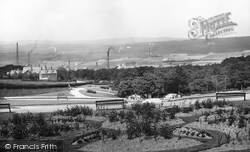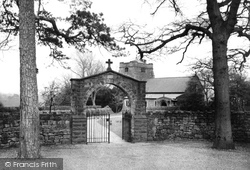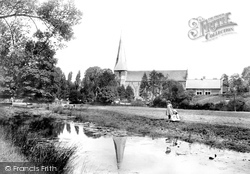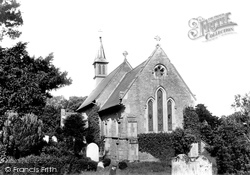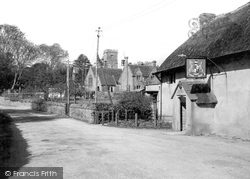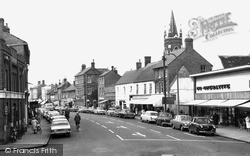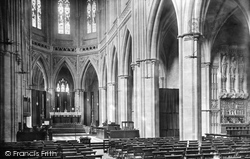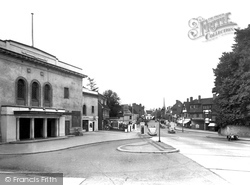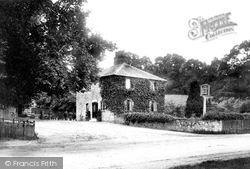Places
3 places found.
Those places high-lighted have photos. All locations may have maps, books and memories.
Photos
104 photos found. Showing results 1 to 20.
Maps
10 maps found.
Books
Sorry, no books were found that related to your search.
Memories
122 memories found. Showing results 1 to 10.
Leos Cafe/Espresso Bar
Although I lived in Tooting, all my cousins lived on the Mitcham side! I was a tomboy and used to hang around over Figges Marsh, playing rounders or smoking illicit ciggies in the red shed! The Teddy boys (later the mods) ...Read more
A memory of Mitcham in 1964 by
My Schooldays 1952 54 Near Skipton
My Grandparents lived at 26 Otley Street in Skipton from the 1940 ( or earlier ) and I had first visited them in 1945 after VE day, They were Thomas Henry Jackson, my Grandmother Charlotte Jackson and their ...Read more
A memory of Skipton in 1952 by
Laleham Abbey
My sister Kathleen Taylor (former name) was cook in the kitchen for the retired old ladies. I was always staying with her during school holidays. Her husband then (now deceased) was Barry Taylor and they had two children, Sarah born ...Read more
A memory of Laleham in 1970 by
Rayne In 1950 1960
I was born in Rayne and in the 1950s.I have fond memories of being able to play various sports in the road at School Road with my brother Peter and friend Richard Dodd, gaining a few more players as word got around! We used to ...Read more
A memory of Rayne by
Tales Of College Green
This shows College Green and its grand posh upmarket shops, at a time in the past when parking wasn't a problem. Many famous people lived round the Green over the years including Mary Robinson; actress and mistress of the ...Read more
A memory of Bristol by
Bristol's Cabot's Tower
Bristol's Cabot's Tower, and the penny pinching Council. Bristol's most prominent land mark, the Cabot Tower, was 100 years old in 1998. But the official opening was marked by a disastrous fire, a confidence trick and ...Read more
A memory of Bristol in 1890 by
Lady Margaret Road
We moved to 108 Lady Margaret Road in 1969. I went to St. Anselms RC school in the Green and then later Southall Grammar (Villiers); my brothers William and Martin went to St. Marks (Hounslow) and Ealing Green then to Dormers. ...Read more
A memory of Heston in 1970 by
The Rec
The "Rec" was the place to be in the 1970's when you lived on the Cedar Rd Estate. We lived just round the corner on Elmdale Rd and had a garden which backed on the Rec. This was a good short cut into the Rec. Lived there as a young ...Read more
A memory of Earl Shilton by
Fair Green
I lived in that stange area of Mitcham known as Lonesome, situated between the level crossing at Eastfields and the bottom of Streatham Vale. It was a sort of 'No Man's Land'. My schooling from 1951- 1957 took place first at the wooden ...Read more
A memory of Mitcham in 1958 by
St Mark's School In The 1960s
I too have wonderful memories of going to St Mark's, the teachers I remember are Mr Freemantle, Mrs Carmichael, Miss Holmes, Miss Catherine and Mr Legg. The headmistress at the time was Miss Bowley, who everyone was ...Read more
A memory of Mitcham by
Captions
36 captions found. Showing results 1 to 24.
The parish church of St Mark was built in 1867. In this view we see the shape of the original tower of the church, which was damaged by fire in 1902 and rebuilt by the Marquis of Zetland.
Bath Street, leading off the Market Place, is one of Ilkeston's main shopping streets. This view looks back towards the tower of St Mark's at the end of the street.
Dedicated to St Mark, the church was designed by George Gilbert Scott and built in 1846.
The originally 14th-century pinnacled tower of St Mark's parish church watches over Ilkeston's wide Market Place, with the town's war memorial in the foreground.
Railways had boosted industry and the city's growth from the middle of the 19th century; the expansion engulfed detached hamlets, thus creating more parishes, which were a basis for local government.
Behind rises the 303-foot spire of the Roman Catholic St Walburghe’s Church, which was completed in 1866 to a design by Joseph Hansom, inventor of the Hansom cab.
The foundation stone is dated 5 September 1789; this building replaced earlier churches on the site.
In a road of rather mundane buildings is the Palace Theatre, a remarkable building designed in a Moorish style by the Robert Adam of theatre design, Frank Matcham, for Moss Empires in 1901, with a seating
Behind rises the 303-foot spire of the Roman Catholic St Walburge's Church, which was completed in 1866 to a design by Joseph Hansom, inventor of the Hansom cab.
This photograph shows the statue of King Edward VII, the eldest son of Queen Victoria, at the corner of Union Street and Union Terrace.
One stop down the line from Enfield town, Bush Hill Park station was opened in 1880 to service this development by the Northern Estates Company.
This view from the top of Whitehall Park looks over the flower beds to Darwen beyond.
The parish church of St Mark is in the main part of the village, near the Methodist Chapel, the primary school and the village shop.
This view from the top of Whitehall Park looks over the flower beds to Darwen beyond.We can make out quite a few of the mill chimneys, but not the most famous of them all, the square 300ft India Mill
The Carfax 1907 The Carfax and market place is at the heart of the old town.
The south side of St Margaret`s Church is seen looking across the churchyard from Church Lane.
St Peter`s Church was built in 1846, replacing a much earlier place of worship on this site.
Mark Twain expected his perfect piece of England to have a castle and the odd ruin.
Mark Twain expected his perfect piece of England to have a castle and the odd ruin.
The Cross, the junction of the High Street, Cambridge Street, Huntingdon Street and Church Street, marks the original site of the centre of town, and was a planned medieval market place.
It became quickly clear that St Mary's Church was too small for the parish. In 1865 the Church of St Peter and St Paul on Broad Street was opened; it became independent of the parish in 1880.
It became quickly clear that St Mary's Church was too small for the parish. In 1865 the Church of St Peter and St Paul on Broad Street was opened; it became independent of the parish in 1880.
In 1758 William Page pulled down the existing house for a new building; he remained the owner and occupier for approximately five years. Mr Mark Basket later occupied it.
In 1758 William Page pulled down the existing house for a new building; he remained the owner and occupier for approximately five years. Mr Mark Basket later occupied it.
Places (3)
Photos (104)
Memories (122)
Books (0)
Maps (10)


